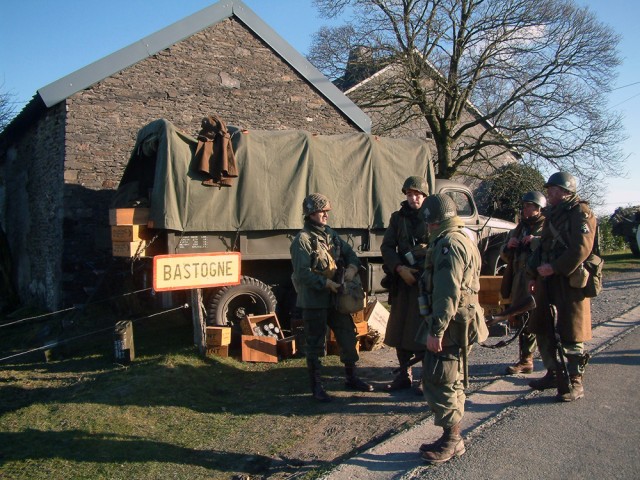
SCHINNEN, Netherlands -- In 1944, all seven main roads in the Ardennes mountain range converged on the small town of Bastogne, Belgium, making control of that crossroads imperative for a German advance in World War II -- a place allied forces had to defend at all cost. It remains the scene of the largest land battle in U.S. Army history.
Today monuments commemorate the siege of Bastogne and the Battle of the Bulge. The 31st annual Bastogne Historical Walk, scheduled Dec. 13-14, salutes the region's place in history as well.
Every year, thousands participate in the walk. One of them is Jan Maessen, a Dutch Ministry of Defense employee at U.S. Army Garrison Schinnen who said the event is a living monument to the town's historical legacy.
"I was very impressed with how the memory is still very alive after 64 years and how people from many nations come together to enjoy a special day," Maessen said.
This year's walk passes through Mande-Saint-Etienne, west of Bastogne, where 101st Airborne Division paratroopers arrived by truck from Reims, France, on Dec. 19, 1944, to block and later halt the Germans' advance towards Bastogne.
Historic re-enactors, some of whom appeared in the HBO television network series "Band of Brothers," set up authentic military positions along the route, complete with period uniforms and equipment. The walk follows the exact route of the 1944 battle and re-enactors representing all sides give participants a foxhole view of "then," allowing today's Soldiers to compare it to their own deployment experiences.
"You're walking along a beautiful wooded path, then suddenly you discover (the re-enactors) and there is a calm climate of friendship. The walk is very well done," said Maessen, who said he plans to join a group from USAG Schinnen on this year's hike,
"I'm going ... to get an idea what Soldiers faced (during the battle)," said Sgt. Jorico Canty, who has deployed twice to Iraq and is now assigned to Schinnen's Headquarters and Headquarters Detachment.
To remind visitors of what happened during the World War II campaign, a historical center and a two-story, star-shaped Mardasson Hill American Memorial are located just outside Bastogne, honoring those who fought and died there. In all, German, American and British casualties totaled more than 181,000. From atop the memorial, visitors can view the area and imagine how the battle unfolded.
"The Bastogne historical walk (allows for) civilian-military interaction that is very friendly and spontaneous," said German Lt. Col. Jan Schraudy, executive officer for the NATO E3A Component in Geilenkirchen, Germany. Schraudy and other NATO airmen said they plan to participate in this year's event.
"It's remarkable to see NATO military members walking together as a team of allies 64 years after that battle," Schraudy said. "The walk is great for fitness, of course, and there are many events, some with buglers and bagpipes, which makes the day special."
The Dec. 13 walk costs 6 Euros and features four distances: 6, 12, 20 or 30 kilometers. Event organizers encourage pre-registration to avoid long lines and ensure walkers get a participation patch. Directions and registration details can be found on the Web at www.bastognehistoricalwalk.be.
Admission to the historical center ranges from 6 to 8 euros; information can be found online at www.bastognehistoricalcenter.be.

Social Sharing